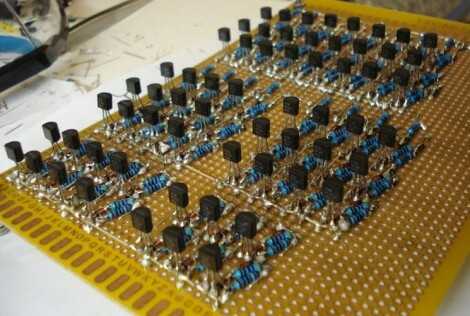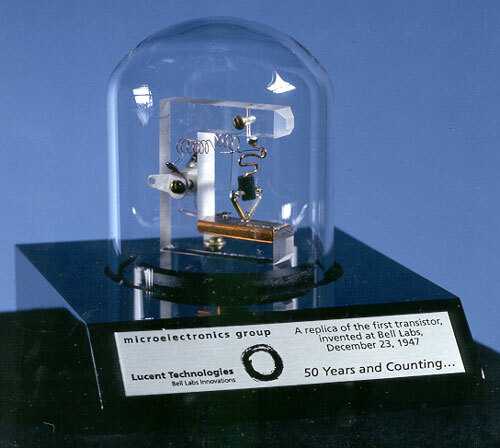109
34
I've been thinking about this concept for a while and have not been able to figure out what could be a plausible answer. It seemed appropriate for my first question on this website.
Imagine an experiment where a group of approximately 20 humans are dropped off on a fairly small (~1000 km²) island that contains all necessary resources as they would appear in a natural environment. The group would then receive the challenge to - starting completely from scratch - build a fully functioning computer system capable of running at least Windows 1.0 with usable speed and then run it successfully as fast as possible. They would start off with no tools or resources. These are the rules and conditions that would be present:
- The group of humans would not need to worry about life supporting and maintaining issues such as food, clothing, weather conditions, natural disasters and hostile wildlife.
- The group would know exactly how to find and assemble any items involved in the process of creating the machine.
- The group consists of young and fit humans that would not experience any social issues within the group, and would not tire from consistent 12-hour working days.
- For convenience, we assume that the humans would not age or die during their participation in this experiment.
- The island contains any necessary resource in completely raw form. Materials like metals may be present in a higher-than-natural rate to ensure there is enough available for completing the challenge.
As I started thinking more about this concept, I began expecting the minimum time needed to achieve such a goal would probably be at least 5 years (Edit: way above). However I am probably underestimating the time it would take to obtain some of the necessary materials and build all of the advanced machinery that is used in assembling a fully functional computer system.
Could anyone suggest a reasonable time estimate for completing such an extreme task/challenge? What would be the biggest obstacles along the way?
As this is my first time ever post on any StackExchange website, feel free to point out anything I should be doing differently.
Edit: The challenge does not require building a version of the hardware that was actually being used to run and interact with the OS. As long as it gets the job done and the system is able to run at usable speeds, it could be built from any material and can be as big as it needs to be.
Edit: I have accepted Karl's answer as it portrays the most factual sequence of steps that would have to be taken in order for the team to achieve the necessary level of technology for building the machine.


Comments are not for extended discussion; this conversation has been moved to chat.
– Tim B – 8 years ago53It would be entirely impossible - The island does not contain a copy of WIndows 1.0. – Zibbobz – 8 years ago
21Why windows? Why not other OS? Why run any OS at all, instead of providing a machine with proper speed? We can measure memory or clock speed, you know. That's more reliable than checking whether some arbitrary OS will run at 'usable speed'. – MatthewRock – 8 years ago
46I remember Windows 1.0 - claiming it ran would be enough to make me laugh... – Jon Custer – 8 years ago
2The exact knowledge is more of a giveaway than you think. No time required for planning! No need for prototypes or debugging! It's a superpower for engineer. Also, for fiction purposes, the group conflict is usually where the story is .. – pjc50 – 8 years ago
38
If the humans live forever and never have to worry about survival, then really all you need is 1 person and a bunch of rocks
– Benubird – 8 years agoThis is similar to one of my favorite existential questions (tailored to programmers) of all time. Roughly, "if you woke up alone in a forest, with nothing but an axe, and couldn't leave, how long would it take before you could send an e-mail?" – TylerH – 8 years ago
1
They should be able to get up and running pretty quickly if crabs hang out on or around the island. And, if they've got mustard and tomato plants, they can even get the awesome Windows 3.1 Hot Dog Stand theme by applying ketchup and mustard to the display crabs' shells.
– 8bittree – 8 years agoYour question reminds me of A Fire Upon the Deep by Vernor Vinge. – db48x – 8 years ago
Check out the open source ecology project. http://opensourceecology.org/about-overview/ These guys are trying to more or less solve this problem. They're creating a list of 50 self replicating machines that can be used to rebuild modern society.
– ThunderGuppy – 8 years agoDo they have access to unlimited information? – user253751 – 8 years ago
what does "all necessary resources" mean? do they have to purify their own silicon and manufacture transistors and chips too? – user17915 – 8 years ago
I'd love to see a series of tubes, valves and water being used to flip leaves in order to turn "pixels" on and off. With infinite time and space you could do it with pebbles and a single hand :P – Loupax – 8 years ago
2What are you claiming as "Windows 1.0 capable"? Do you mean any x86-compatible CPU/architecture? Or any architecture of comparable capabilities, even if it's not bitwise-compatible with x86 (and therefore unable to run a 'standard' instance of Windows 1.0)? Are you aiming to exactly replicate the 8086 CPU architecture, or just approximate the performance of a circa 1985 8086 processor using any hypothetical architecture? – aroth – 8 years ago
1Windows is super-inefficient and requires the x86 architecture, so that might be not a good criteria. – stommestack – 8 years ago
1
Have you considered targeting Minix instead of Windows? -- It's much more suited to small computer systems. -- Someone here built a Minix system out of 7400 series logic gates; it's a far stretch to go from that to manufacturing your own trasistors (but I mean you could build mechanical ones at the very least with reed switches, you still need a lot of industry for that, but at least your goal is possible -- might need more like 200 people though). -- Additionally it saves you the issue of building a display, you can just have them build a printer.
– BrainSlugs83 – 8 years ago1What if the answer is never because they can't repair or maintain the machinery as fast as it breaks. Even if you started them off at an almost there state, parts would get old faster than they could be replaced. – Donald Hobson – 8 years ago
Let's get the "Primitive Technology" YouTube guy on this. – Brian Risk – 8 years ago
8How I built a toaster from scratch – None – 8 years ago
1Are you aware that nothing useful ran on Windows 1.0? If people were going to do this, DOS 3.x would be an easier goal that's just as useful. Windows 3.0 was the first version that had any interesting software competitive with the DOS-based offerings of the time. – R.. GitHub STOP HELPING ICE – 8 years ago
Hopefully, long enough for any primitive civilization to wipe out any of the mistaken developers and their ill-begotten plan. This question is like asking how long would it take to create a squared wheel from scratch. – user296844 – 8 years ago
"No tools or resources". "The group would know exactly how to find and assemble any items involved in the process of creating the machine". So what you have here is a collection of people that know the entire curriculum of MIT by heart and do not need any kind of library to look things up. This would also mean that they know pretty much any physical constant you can think of... like the specific weights of different elements, orbital energies for the entire periodic table... and so on. This is entirely super-human... and not credible in the least. – MichaelK – 8 years ago
1
By the time The Myserious Island was written, the world's collected knowledge in chemistry could fit in an encyclopedia. By then it was still credible that a group of people could keep sufficient knowledge in their heads to get to such a point where they could manufacture explosives. But to get to the point where you keep enough knowledge to build the components of a computer without any kind of infrastructure or library to help you... no, now you are in the realm of fantastic.
– MichaelK – 8 years agoNot sure about MS Windows on a desert island, perhaps Palm OS would be more appropriate :P – Wossname – 8 years ago
Can your superhumans have kids? If so, are those kids superhumans? ... And I'd assume waive all objections against child labor. ... And can your "humans" be used as supplies? ... ... Mega-creepy superhumans using their own bones to make tools? ... Or other tool uses of an immortal human? – Malady – 7 years ago
Obviously 20 humans can become 40 in a few years – MicroMachine – 6 years ago